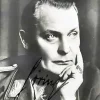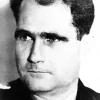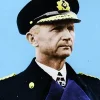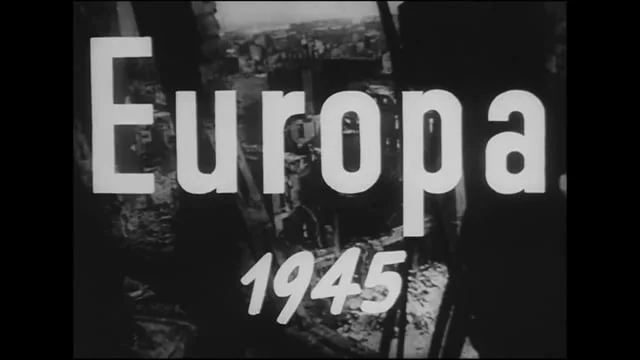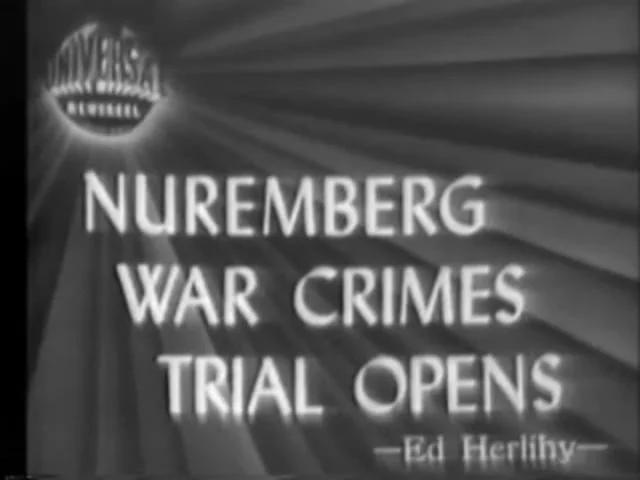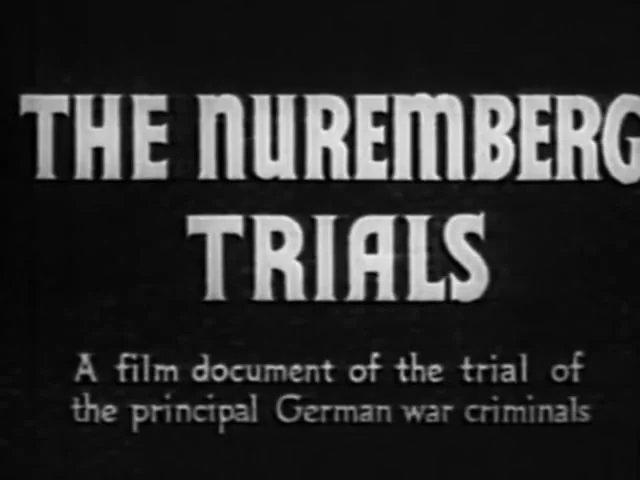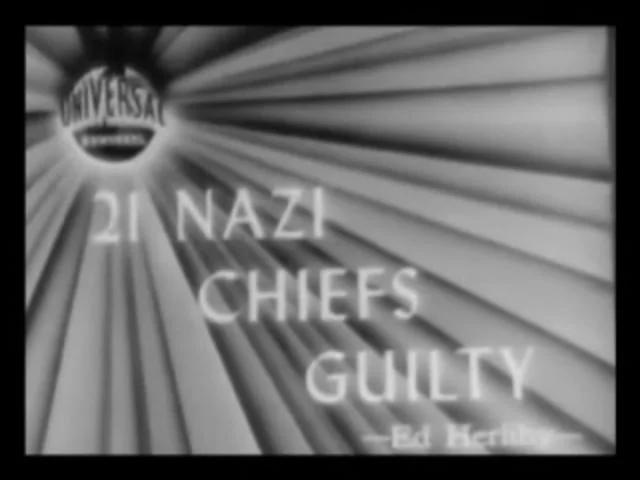- Military History
- Prisons, Prisoners & Camps
- Events
- Nuremberg Trials (1945)
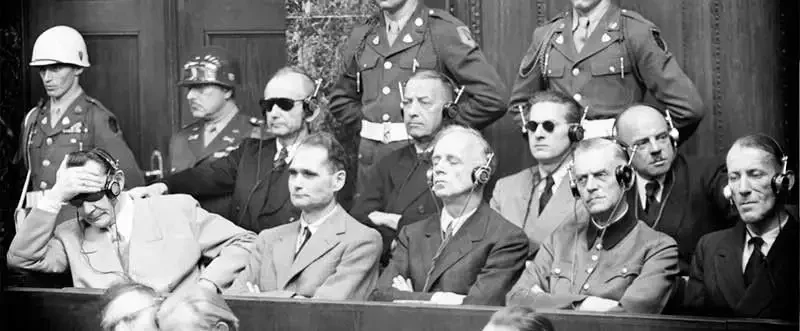
Nuremberg Trials (1945) The International Military Tribunal at Nuremberg was unique in judicial history
When the occupation of Germany was completed by the Allied forces, there began the formidable task of bringing to some form of justice the vast number of war criminals. It was a task that would last until 1948, when the German courts were authorized to take over this responsible act of retribution. There were many legal and moral problems involved, for it was only too easy to turn retribution into revenge or to apply a retroactive form of law, that is, a legal code that did not exist at the time the crimes were committed.
Many of the worst culprits (notably Adolf Hitler and Heinrich Himmler) were dead; many had escaped the country like Adolf Eichmann or gone into hiding (for example, Rudolf Höss, who was not arrested until March 1946). Others, such as the defendants at the initial trial held at Nuremberg under joint Allied control (the International Military Tribunal) were already under arrest. Other notable trials followed in the four zones under the control of the particular Allied nation in authority.
The International Military Tribunal at Nuremberg was unique in judicial history. Its legal basis was established at a conference in London of jurists from the four victorious nations convened on June 26, 1945. Agreement on a statute for the court was finally reached and signed on August 8, and this was subsequently subscribed to by 23 nations. The trials were open to criticism not only because they applied a code of law retroactively but because they adopted an Anglo-American form of procedure unfamiliar to the German people and because the accusers were also the judges.
However, Dr. Robert Woetzel in The Nuremberg Trials and International Law claims the tribunal was properly grounded in international law and has created a precedent for the future. Certainly, it led to an almost immediate and relatively systematic exposure before the eyes of the world of the appalling culpability of the Nazi regime, in the form of massive documentary evidence and reiterated personal testimony.
The defendants at the Nuremberg Trials were:
- Hermann Göring
- Karl Dönitz
- Rudolf Hess
- Erich Raeder
- Joachim von Ribbentrop
- Baldur von Schirach
- Alfred Rosenberg
- Fritz Sauckel
- Wilhelm Keitel
- Alfred Jodl
- Ernst Kaltenbrunner
- Franz von Papen
- Hans Frank
- Arthur Seyss-Inquart
- Wilhelm Frick
- Albert Speer
- Julius Streicher
- Konstantin Freiherr von Neurath
- Hjalmar Schacht
- Hans Fritzsche
- Walter Funk
- Martin Bormann (in absentia)
Robert Ley would also have stood trial, but he committed suicide in his cell on October 25, 1945. The defendants had, in fact, been flown to Nuremberg on August 12 and confined in cells within the virtually undamaged Palace of Justice, where the trials were held. Not only were the prisoners kept under heavy guard by the Americans, they were also placed under psychiatric observation, the psychiatrists' reports being published subsequently: Twenty-two Cells in Nuremberg (1947) by Douglas M. Kelley and Nuremberg Diary (1947) by G. M. Gilbert.
The charges at the Nuremberg Trials were grouped under four main headings:
- The Common Plan or Conspiracy, relating to the seizure of power in Germany and its utilization to achieve foreign aggression.
- Crimes against Peace - the planning, preparation, initiating and waging of wars of aggression, in violation of international treaties.
- War Crimes in countries and territories occupied by German Armed Forces and on the high seas - murder and ill-treatment of civilian populations, deportations for slave labor, killing of prisoners of war and hostages, malicious destruction of cities, towns and villages, plunder of public and private property, conscription of civilian labor and Germanization of occupied territories.
- Crimes against Humanity - murder, extermination, enslavement, deportation, persecution on political, racial and religious grounds.
The defendants were presented on October 18, 1945 with a copy of the indictment some 25,000 words long and they were permitted to choose their German defense lawyers from a list prepared by the Allied authorities. The main costs of the trials conducted in German and interpreted by simultaneous translation into English, French and Russian were borne by the United States. The proceedings were fully recorded, and key moments were covered on sound film. The world press was represented on the opening day by 250 journalists of whom only five were German.
The court proceedings were to become endless, lasting in all 218 days, occupied as follows:
1945
20th of November: The indictment was read
1945-46
November to March: Case for the prosecution
1946
March to July: Case for the defendants
July: Final speeches for defense and prosecution
July to August: Trial of indicted organizations
31st of August: Final statements by defendants
30th of September: Judgments read
1st of October: Conclusion of trial
15th of October (night): Executions
The parallel trials in Tokyo lasted 417 days.
The judges at the Nuremberg Trials consisted of:
- Major General Iona Nikitchenko (Soviet main)
- Lieutenant Colonel Alexander Volchkov (Soviet alternative)
- Lord Justice Colonel Sir Geoffrey Lawrence (British main), President of the Tribunal
- Sir Norman Birkett (British alternative)
- Francis Biddle (American main)
- John J. Parker (American alternative)
- Professor Henri Donnedieu de Vabres (French main)
- Robert Falco (French alternative)
The teams of prosecutors for each country at the Nuremberg Trials were led by:
- Attorney General Sir Hartley Shawcross (United Kingdom)
- Associate Justice Robert H. Jackson (United States)
- Lieutenant-General Roman Andreyevich Rudenko (Soviet Union)
- François de Menthon, later replaced by Auguste Champetier de Ribes (France)
The American commission was responsible for the immense task of collating, condensing and translating the vast body of documentary evidence fed into the trials - including selections from some 350,000 affidavits, as well as innumerable interrogations and evidence derived from captured Nazi archives. The tribunal heard the testimony of well over a hundred witnesses.
The first day of the Trials
During the first day of the trials on the 20th of November 1945 the lengthy indictment was read out. Two defendants (Hess and Kaltenbrunner) were absent because of illness. On the second day each prisoner, including Hess but still excluding Kaltenbrunner (who had suffered a heart attack), declared themselves "not guilty". The massive case for the prosecution then began and became in effect a history of the Third Reich presented in terms of the four counts named above and as reflected in the respective careers of each defendant.
Cases against the key individuals
This was followed by the cases against the indicted organizations and the key individuals responsible for their activities: the Reich cabinet, the leadership corps of the Nazi Party, the “Schutzstaffel”, the “Sicherheitsdienst”, the Gestapo, the “Sturmabteilung” and the high command of the German armed forces (OKW).
The record of the trials as published in Nuremberg in English fills 23 volumes, amounting to some 6 million words, while the documentary evidence fills a further 19 volumes. Behind it all lay the evil personality of the dead Führer, whom only Göring went out of his way to defend, though Keitel asserted Hitler's genius as a military strategist, betrayed (he said) by the evil influence of Himmler, Goebbels and Bormann.
The defendants were largely divided between those who were penitent (Frank, a newly converted Catholic; Schirach; Funk; Speer, who was always reasonable and factual), those who were enraged at being there at all (notably Schacht, who considered himself a member of the German resistance), those who kept as indifferent and uninvolved as possible (Papen and Neurath), the service chiefs who considered the trial inapplicable to their case, since they had been in uniform and required to obey orders (Raeder, Dönitz, Keitel and Jodl), and those determined to brazen it out (such as Kaltenbrunner and Streicher).
The two exceptions were Göring, who in private conversation was remorseful but in the courtroom was often spokesman for the leadership principle as propagated in “Mein Kampf”, was at times impatient or ironic at the lack of detailed knowledge in his accusers and was deceitful under severe cross-examination (for example when questioned concerning his knowledge of the Concentration Camps, which he continued to deny); and Hess who pretend amnesia except for the electrifying moment on the 30th of November 1945 when he suddenly got up and proclaimed that his loss of memory was simulated and that he accepted full responsibility for what he had done. After this outburst, however, he relapsed once again into his obliviousness.
Witnesses and cross-examinations
Many witnesses gave startling evidence; for example, Erwin Lahousen's testimony about the existence of the opposition to Hitler within the Abwehr and about the parts played by several defendants in the exterminations in Poland, Hans Giseviu’s bitter statements about Göring's participation in various Nazi scandals, Höss’s cold-bloodedly factual declaration about extermination in Auschwitz and Otto Ohlendorf’s testimony about the crimes of the Einsatzgruppen in Russia.
Of the cross-examiners the most penetrating and persistent was the British Sir David Maxwell-Fyfe, and the most emotional and deeply moved was the American Robert H. Jackson. For the first time the great wealth of documentary evidence against the Nazis was exposed to public scrutiny. Speer shocked some of his fellow defendants (notably Göring) by declaring that he had come to regard Hitler as "a selfish, destructive force that had no consideration for the German people."

The hearing of Hermann Göring at the International Military Tribunal in Nuremberg
But undoubtedly the hearing of Göring's case was the highlight of the trial since he was inevitably the foremost defendant. "I am determined to go down in German history as a great man", he declared to the psychiatrist Dr. Kelley. No less than 13 days were spent in his defense and Göring behaved throughout like an actor performing the greatest role of his life. He was often well-spoken in his exposition, often humorous and entertaining, always determined to dominate the proceedings, anxious to show off the fullness of his knowledge and memory for detail. His impertinent declarations, interruptions and evasions eventually made Jackson lose his temper and the trial had to be recessed. Maxwell-Fyfe hammered at him over the concentration camps and was equally severe in his treatment of Papen and Neurath when they attempted to evade any responsibility for what had happened.
The end of the Trials
The trials dragged on month after month. Finally, the defense attorneys took two more weeks winding up their cases; the prosecutors, in their final statements, used up a further four days. Another month was spent exploring the evils of the accused organizations.
On the 30th of September after the lapse of a month while the judges considered their verdicts finally came the judgment.
Condemned to death at the Nuremberg Trials were:
- Hermann Göring
- Joachim von Ribbentrop
- Alfred Rosenberg
- Fritz Sauckel
- Wilhelm Keitel
- Alfred Jodl
- Ernst Kaltenbrunner
- Hans Frank
- Arthur Seyss-Inquart
- Wilhelm Frick
- Julius Streicher
Condemned to imprisonment at the Nuremberg Trials were (Spandau Prison):
- Rudolf Hess (life sentence)
- Walter Funk (life sentence)
- Erich Raeder (life sentence)
- Albert Speer (20 years)
- Baldur von Schirach (20 years)
- Konstantin Freiherr von Neurath (15 years)
- Karl Dönitz (10 years)
Acquitted at the Nuremberg Trials were
- Hjalmar Schacht
- Franz von Papen
- Hans Fritzsche
Papen and Fritzsche, as distinct from Schacht, could not believe their good fortune. They were however subject to retrial at the hands of the Germans. Göring alone refused to face the hangman along with the others awaiting death. When his request to be shot like a soldier was refused, he took his own life on the night he was due to hang (the 15th of October) swallowing a capsule of cyanide which he had kept concealed.
Col. Burton C. Andrus the U.S. Army governor of Nuremberg prison revealed in 1967 the text of a suicide letter Göring had left for him explaining that he had managed to conceal two capsules throughout his captivity.
The International Military Tribunal war crimes trials were the first of a network of trials conducted by the Allies of those accused of Nazi crimes. Twelve additional trials took place in Nuremberg starting in October 1946 and spanning some 1,200 days in court. The transcripts occupy 330,000 pages. These cases included that against the SS Einsatzgruppen participants (the specialist killers who caused the death of 1 million people in German-occupied Russia) - the outstanding defendant was Otto Ohlendorf who was in charge of Einsatzgruppe D in 1941-42. Another of these trials (lasting eight months between December 1946 and July 1947) was that of the SS doctors who had conducted the so-called scientific experiments on the prisoners in the concentration camps.
- {{#owner}}
- {{#url}} {{#avatarSrc}}
{{name}} {{/url}} {{^url}} {{#avatar}} {{& avatar}} {{/avatar}} {{name}} {{/url}} - {{/owner}} {{#created}}
- {{created}} {{/created}}


